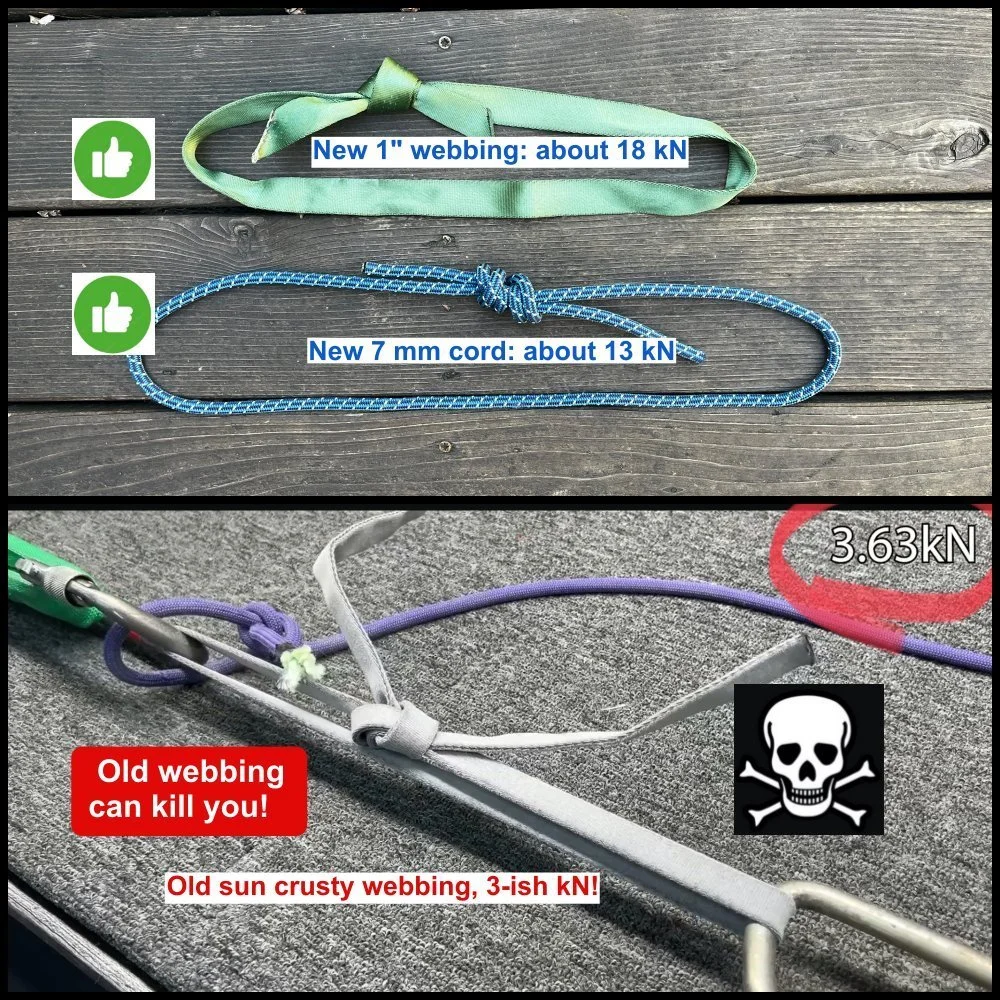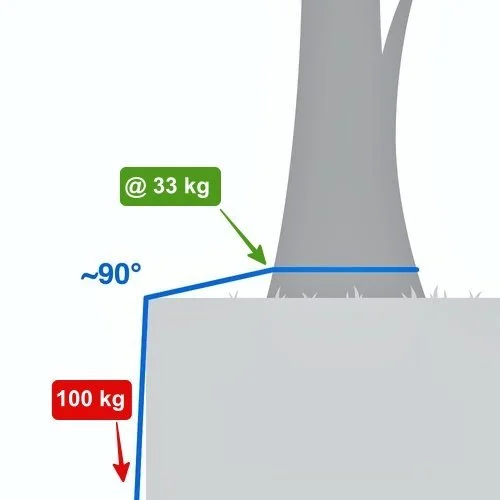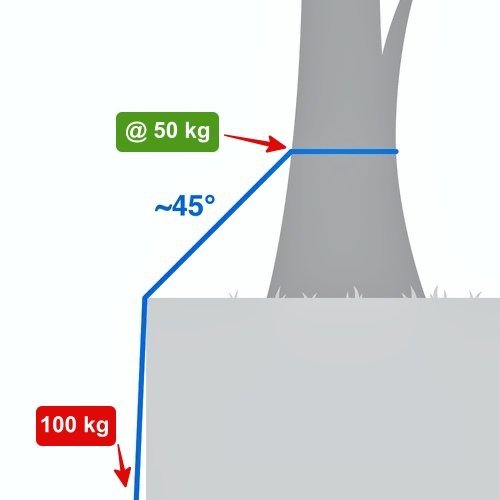How to rappel on marginal anchors
image credit: Silas Rossi, @silasrossi
At some point in your alpine climbing, you’ll be staring down a rappel anchor that’s as sketchy as Donald Trump’s tax returns. Here are some ways to hopefully get you and your partner down in one piece.
Improve the anchor. Is it a strand or two of sun crusted, rock rodent chewed ancient webbing? Get out your cordelette or a sling(s) and leave those behind. Old, weathered webbing can be as weak as 3-ish kN! (See some test results below.) Yes, people have died from this type of anchor failure, don't be the next one. You do have a knife, right?
If the anchor looks like the rat’s nest in the above photo, do everybody a favor: cut away the garbage and leave only the best two or three bits of cord.
Are you arriving at an anchor from a rappel? Stay on rappel and bounce test the anchor. While secure on the rappel ropes, clip your tether into the masterpoint, and give it a few good bounces. A good bounce on a static tether puts about 3x your body weight onto the anchor. If it holds, good. If it doesn't, you're still backed up on your rappel rope.
Backup the anchor if it all possible with other gear. Send the first and heaviest person down first so the backup can do its job if the primary anchor fails. (Obviously this rule was made by heavy people.) If the anchor holds for the big person, it's likely gonna hold for everybody else, and the last person can remove the backup. If the last person is still sketched, they have the right to leave behind ANY gear they want as a backup. Yep, including that $90 cam, your life is worth it. See video at bottom of page for an example.
Bounce test. Ideally, when you’re backed up to something solid, load the rope and give it a solid bounce. Be sure that the backup is unweighted and doesn’t take any load during this test. As mentioned above, a decent bounce is about 3x your bodyweight, way more force than actually rappelling.
Rappel slowly and smoothly, not like some Special Forces cowboy.
If the anchor is truly marginal, the first person down can place gear and clip one strand of the rope to it. If the top anchor fails, this might save the day.
Old sun-crusted webbing is shockingly weak!
As in, not much more than bodyweight weak, like 3-ish kN!
bottom image: HowNOT2.com
Introducing some edge friction can significantly reduce force on the anchor. This usually means, if possible, rigging the anchor low to run over the edge of the ledge you’re on. You can try to (carefully) downclimb a bit before below the ledge before you fully load the rope, if the terrain lets you do that.
Check out these diagrams. (Assume a rappel load of 100 kg.)
When the rope takes a sharp 90° or so bend over the edge of the cliff, the anchor load can be reduced by about 2/3.
With a milder 45° angle or so, the load on the anchor is reduced by about half.





